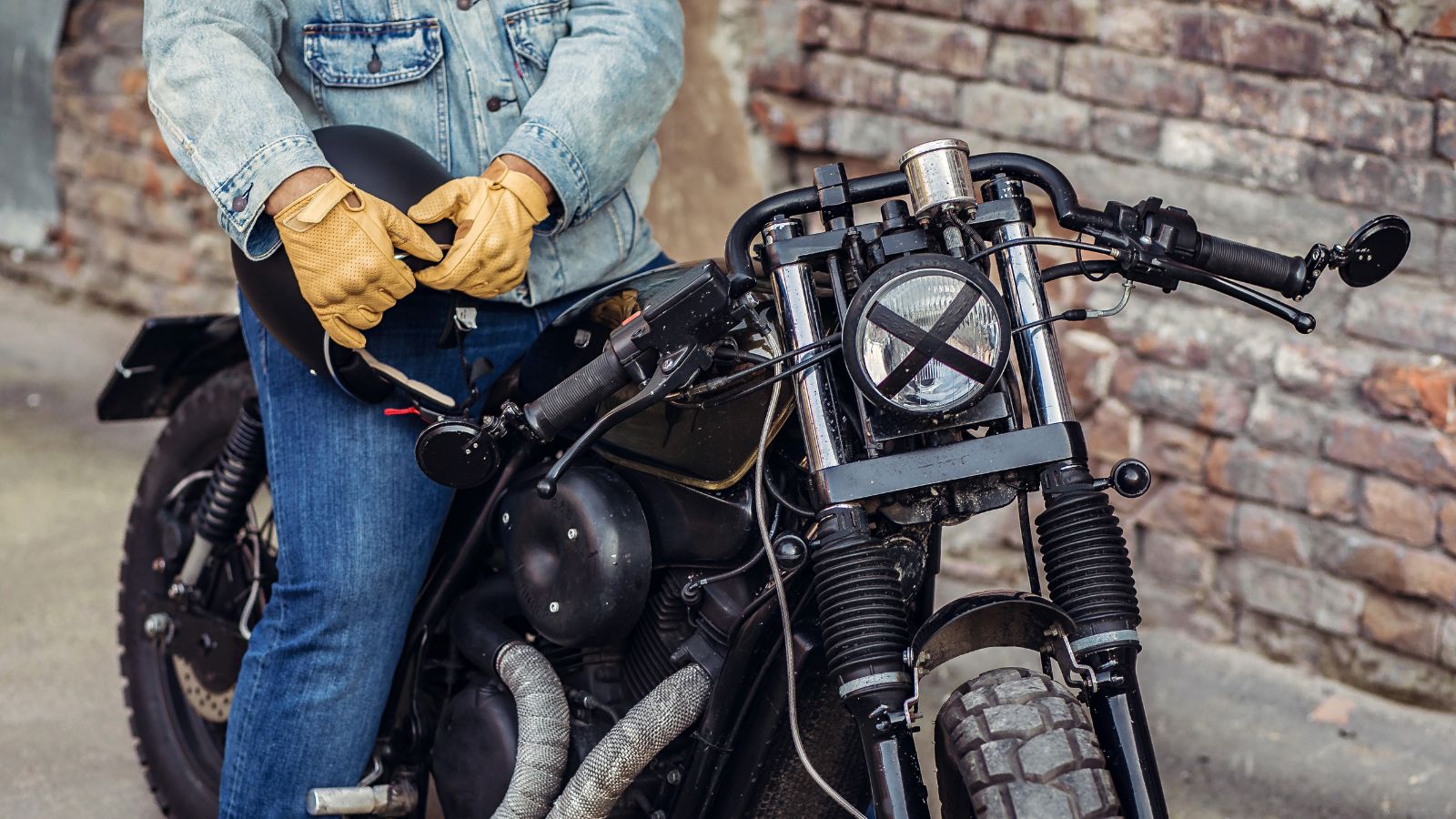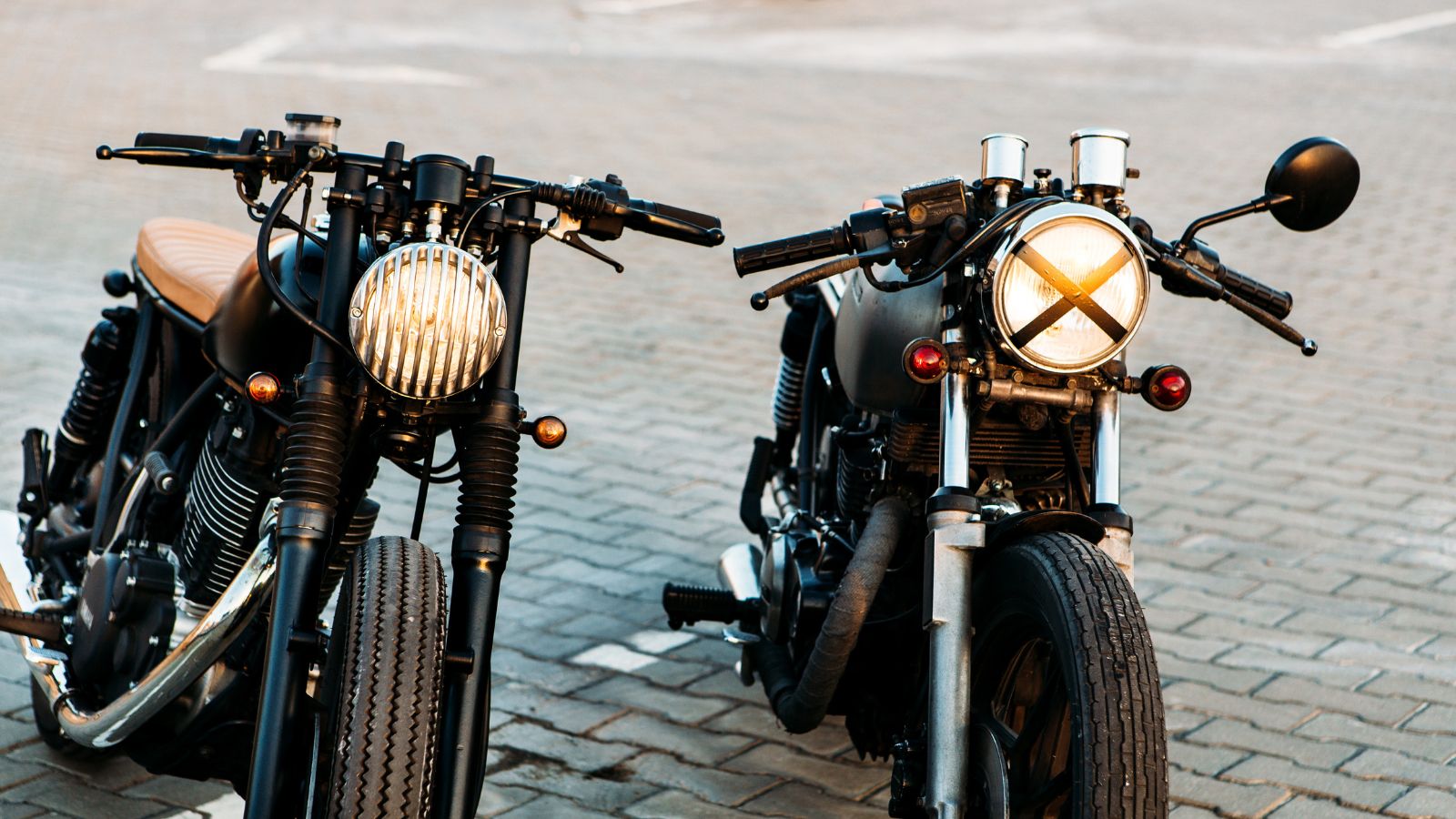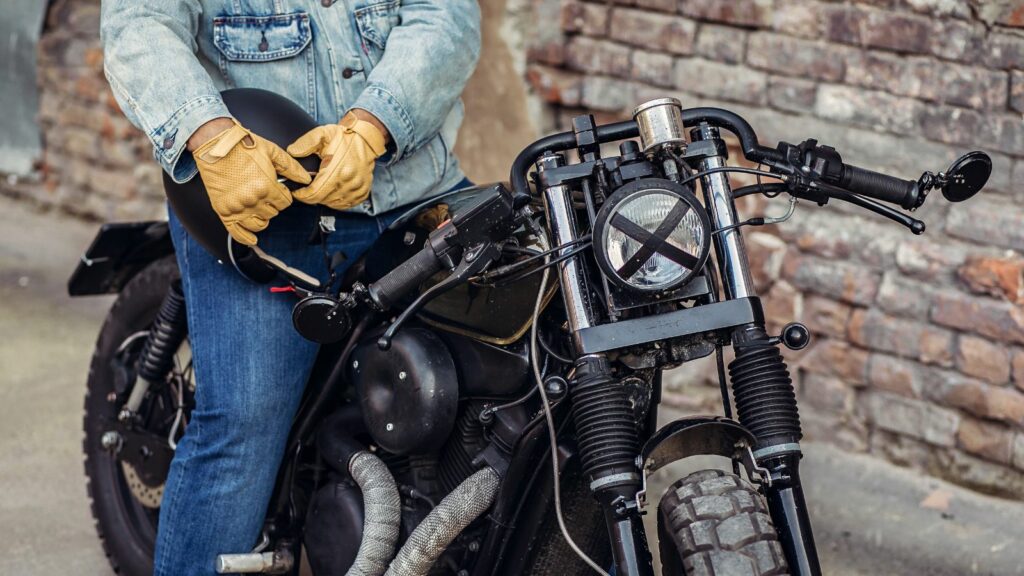If you’ve been around motorcycle meets, vintage races, or even just scrolling through bike forums, you’ve likely spotted a machine with a bold tape “X” stretched across its headlight. It looks rugged, rebellious, and a little mysterious. But why do bikers do it? The answer has roots in racing history, wartime ingenuity, and even modern biker culture.
A Nod to Racing Heritage

The taped X began in motorsport. Decades ago, when motorcycles raced with fragile glass headlights, riders would slap tape across the lamps to keep shattered pieces from flying onto the track during a crash. The X pattern was the most effective way to hold shards together, as it covered the widest area with minimal tape. It became a standard practice at everything from European road races to American dirt tracks. Today, the look has carried over as a tribute to that golden racing era.
Protecting Against Breakage

Even outside racing, taping headlights had practical benefits. Older glass lenses were vulnerable to flying stones, gravel, or debris. The tape acted as cheap insurance, keeping cracks from spreading or preventing total shattering. Riders with vintage bikes still use the technique to protect rare, expensive, or hard-to-replace lenses. On modern polycarbonate headlights, it’s less about necessity and more about style, but the origins remain functional.
Distinguishing Track-Only Bikes

Track day rules often require taping headlights, brake lights, and turn signals. The tape prevents sharp fragments if a bike goes down, and it helps organizers quickly spot bikes prepped for closed-course use. Many riders slap on the trademark X before hitting the circuit, knowing it connects them to decades of racing tradition. Even if your bike is street-legal, once that X goes on, it looks like it’s ready to dive into the apex at full throttle.
Style and Attitude

Not every rider who tapes a hedlight ias worried about rocks or regulations. For many, it’s purely about the image. The X has become a cultural symbol—tough, minimalist, and unapologetically old-school. On café racers, it harks back to the stripped-down street racers of 1960s London. On flat-track builds, it recalls the dusty, no-frills competition machines. On modern custom streetfighters, it’s a statement that says, “I don’t care about polish, this bike is built to ride hard.” Some even paint the X permanently onto their lamps to capture that gritty aesthetic.
Military Roots and World War II Influence

The taped X also echoes wartime motorcycle use. During World War II, military dispatch riders often taped over headlights to reduce glare and avoid drawing attention during blackouts. Sometimes it was an X, sometimes a grid, but the idea was the same: limit shattering and control visibility. Many post-war bikers, including returning soldiers who got into motorcycling, carried those styling cues into civilian riding. It’s part of why the X stuck around as a visual symbol of toughness and practicality.
Legal and Practical Concerns

Here’s the catch: in most regions, it’s illegal to obstruct your headlights, even partially. Police may ticket riders if they think the tape reduces visibility, especially at night. In practice, a thin strip of tape doesn’t kill much light, but a thick band can distort beams and make night riding dangerous. That’s why most riders reserve the X for daytime cruising, bike shows, or photo shoots, rather than nighttime commuting. It’s a cultural badge, not an everyday necessity.
A Symbol of Biker Culture

Ultimately, the taped X is more than adhesive across glass—it’s a badge of belonging. It ties modern riders to the grit of racing pioneers, to the soldiers who rode during war, and to generations of rebels who turned motorcycles into icons. It’s simple, cheap, and instantly recognizable. Whether it’s protecting a rare classic headlight or just serving as a fashion statement, the X carries a weight of tradition that still resonates today.
